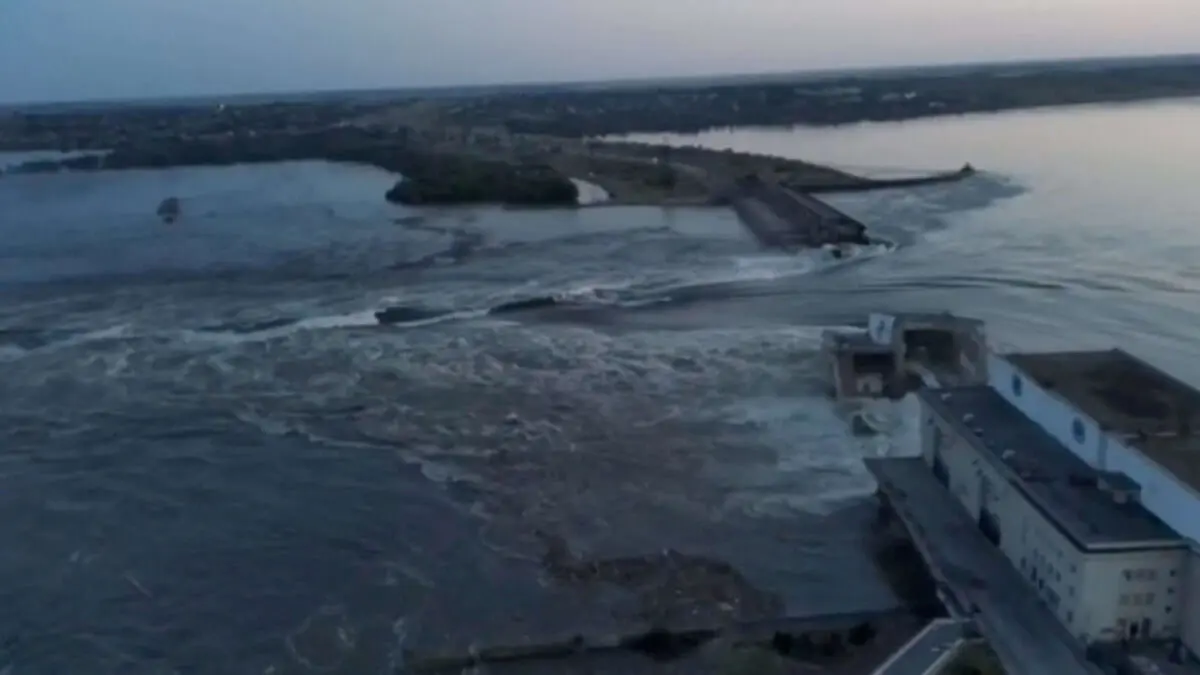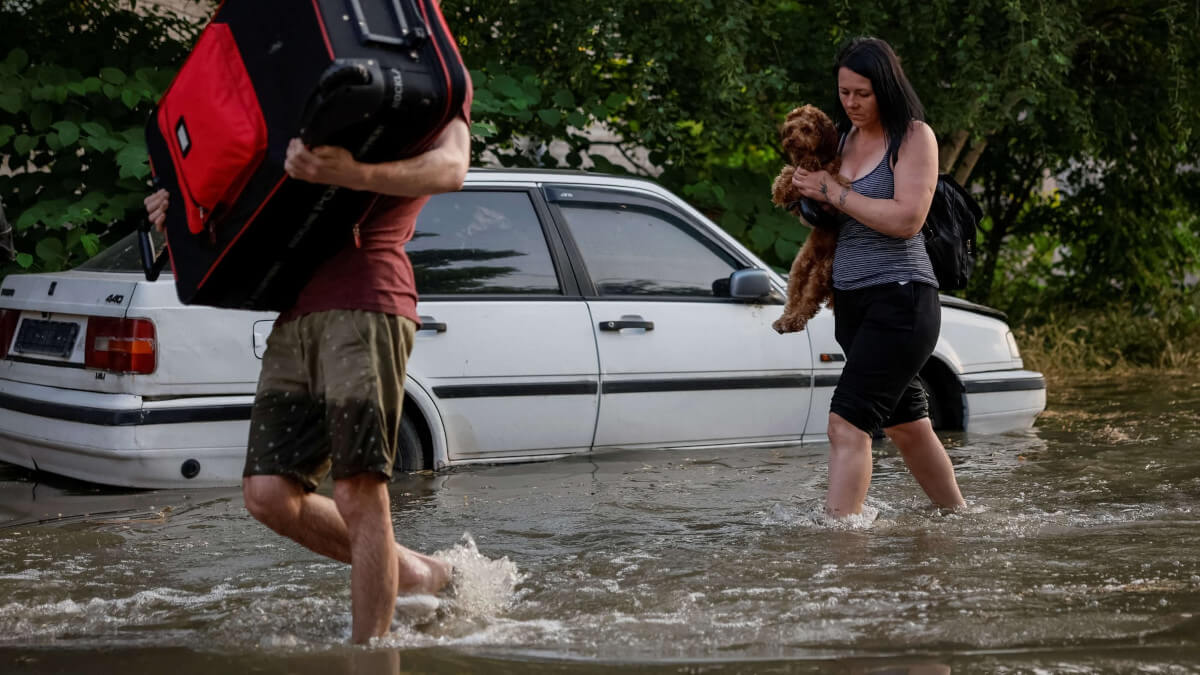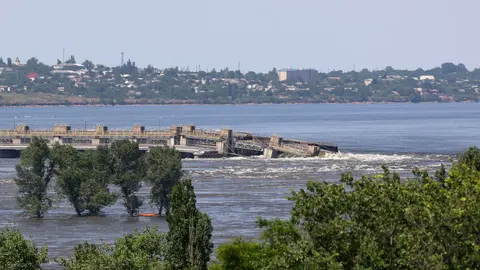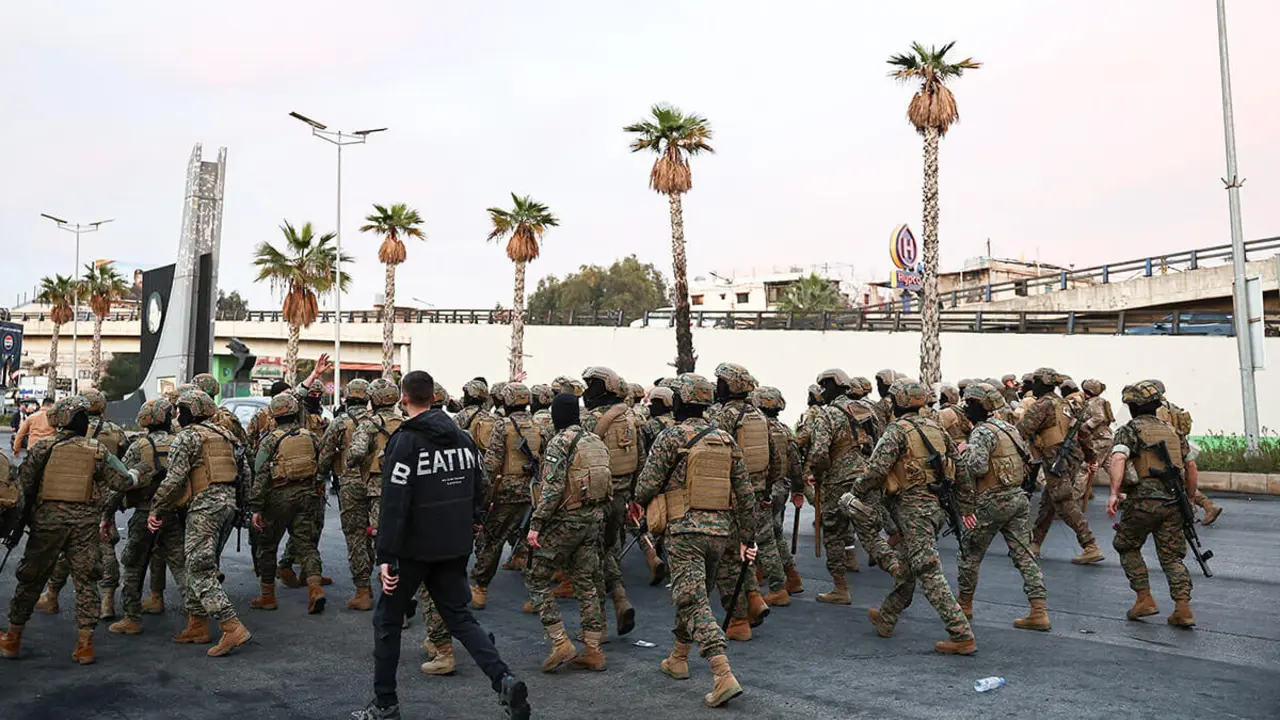The unknowns of Nova Kakhovka

The consequences are disastrous. More than 18 million cubic metres of accumulated water are making their way into the Dnieper River after the destruction of the Nova Kakhovka dam near Kherson. There is still no one responsible for the blowing up of the infrastructure, and data on the flooding and evacuations are constantly changing depending on whether the reporting authority is Russian or Ukrainian.
The Kremlin-imposed administration in Nova Kakhovka claims that the water level this morning is beginning to recede, but the flood emergency has prompted Russia to declare a state of emergency in the controlled areas of Kherson. According to the Russian mayor of the town, Vladimir Leontiev, at least seven people are missing after the flooding and more than 900 people had to be evacuated. From Kiev, the figures and accusations are much harsher.
Russian terrorists have once again proved that they are a threat to everything living. The destruction of one of the largest water reservoirs in Ukraine is absolutely deliberate. At least 100 thousand people lived in these areas before the Russian invasion. At least tens of… pic.twitter.com/ISjIwKc2QN
— Володимир Зеленський (@ZelenskyyUa) June 7, 2023
"Russian terrorists have once again shown that they are a threat to every living thing. The destruction of one of the largest water reservoirs is absolutely deliberate. Hundreds of thousands of people have been left without normal access to drinking water," Ukrainian President Volodymir Zelensky tweeted. According to Kiev, more than 80 municipalities are at risk of flooding, where more than 42,000 people live. The head of the Kherson Regional State Administration, Oleksandr Prokudin, says more than 1,300 citizens have been evacuated from the Ukrainian-controlled bank, and are expected to continue to be evacuated despite continued shelling.

"Environmental bomb of mass destruction"
Consequences for the population aside, Zelenski has referred to the natural disaster caused by the flooding as an "ecocide" and a "bomb of environmental mass destruction" perpetrated by Moscow.
The destruction of the dam also involves the Zaporiyia nuclear power plant, the victim of continuous blackmail by the Kremlin since the invasion began. After the blowing up of Nova Kakhovka, all alarms were raised about the safety of Europe's largest power plant as the cooling water pond was endangered. However, the International Atomic Energy Agency (IAEA) has stated that this reservoir "is full and has enough water for several months".

A repeated strategy
This is not the first time that water has been used as a weapon of war in the Russian invasion of Ukraine. It was a natural barrier that the Ukrainian army used to save Kiev when Russia was knocking on the Ukrainian capital's door.
In addition to blowing up strategic bridges that prevented the Russian advance, the Ukrainian armed forces destroyed the Kiev dam, the first large reservoir that collects the waters of the Dnieper River and where the Irpin River flows into it. The village of Demydiv was flooded after the water overflowed, but according to the citizens themselves, it was the price to pay to save Kiev from the Kremlin troops. The spread of water throughout the affected territories was able to thwart a Russian assault on the capital and undoubtedly gave valuable time for defence preparations.
The damming of the Kiev reservoir is not comparable to Nova Kakhovka, but it maintains a similar strategy on the Dnieper River: the natural barrier preventing the advance of any offensive. It is the longest and largest river in Ukraine and the fourth largest in Europe, at more than 2,200 kilometres long. Today, it is the natural border in Kherson Oblast, "the most reasonable option for organising a defence", as Russian General Sergey Surovikin, the then commander of Russian forces in Ukraine, put it.









